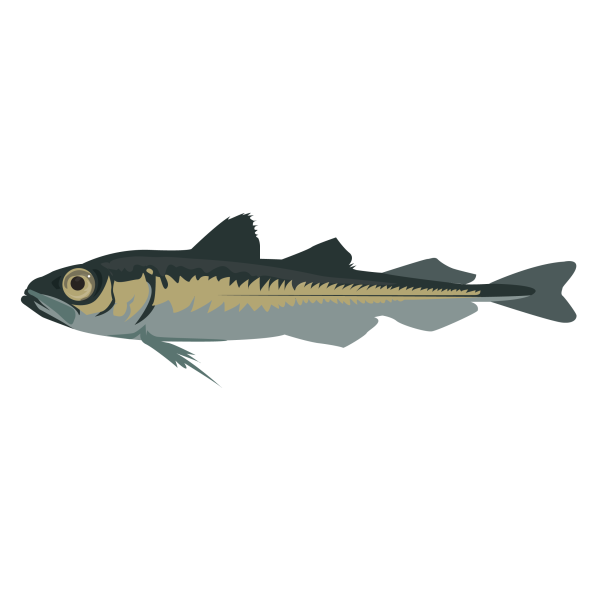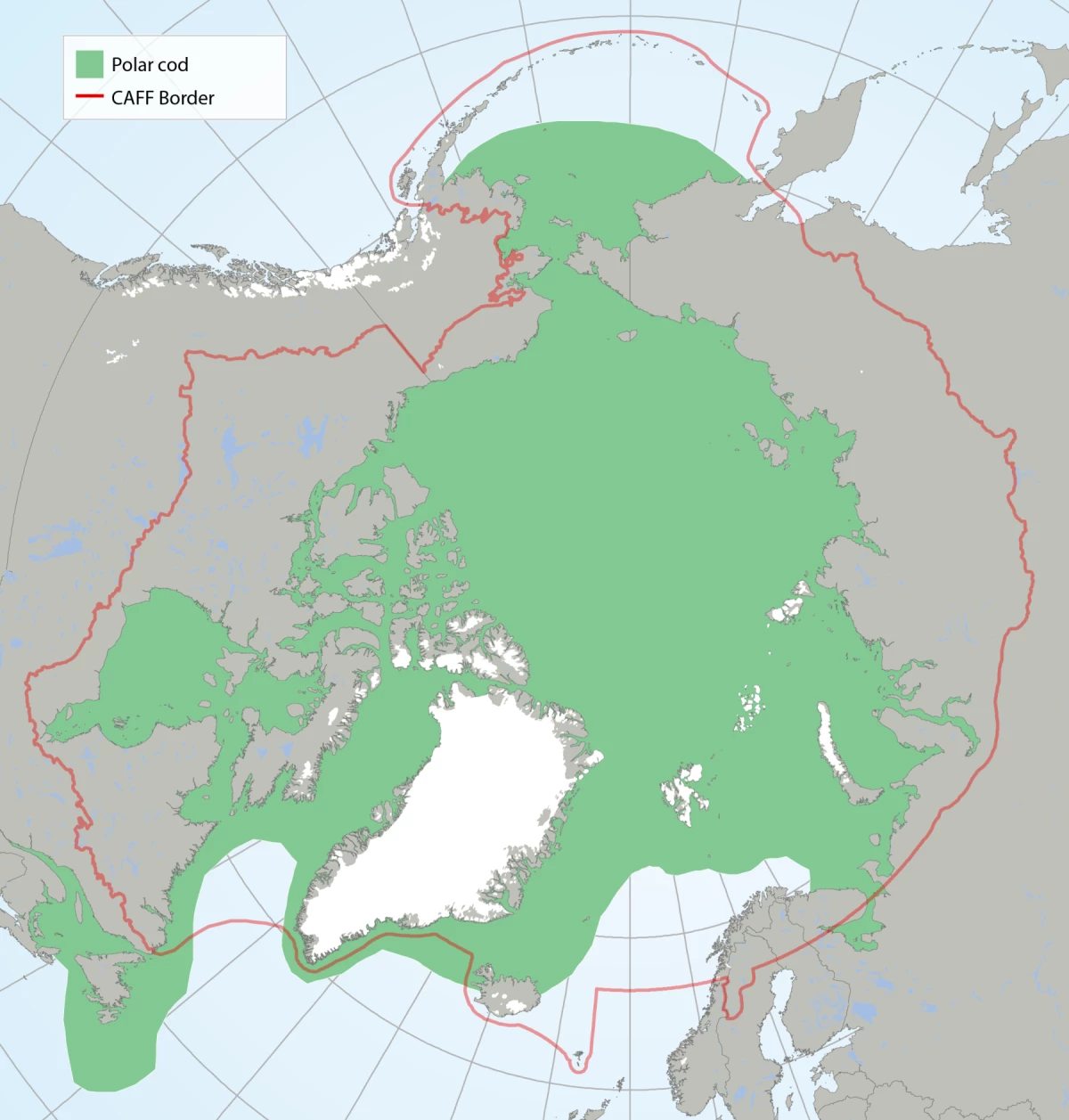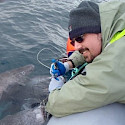Polar cod
- Ecosystem: Marine
- Habitat: Sea ice
- Species group: Fish
- Publications: Arctic Marine Biodiversity Monitoring Plan
- AMA: Arctic Archipelago Arctic Basin Atlantic Arctic Beaufort Sea Davis-Baffin Hudson Complex Kara-Laptev Pacific Arctic

GRAPHIC: JOSÉ ORTEGA
The polar cod (Boreogadus saida) is a keystone species and the most abundant fish species found throughout the Arctic Ocean. It is adapted to the harsh Arctic environment, producing antifreeze proteins in its blood and capable of migrating vertically in the water column. Polar cod spawn under the sea ice in the spring, and their eggs and larvae provide an important food source for other Arctic organisms.
However, there has been taxonomic confusion associated with the polar cod. It is sometimes mistakenly identified as the Arctic cod or vice versa, due to inconsistency in the use of local common names. Furthermore, the migratory population of Atlantic cod is also known as the North East Arctic cod, which has been mistaken for the polar cod. To avoid confusion, it is important to use the scientific name, Boreogadus saida, or the vernacular name, polar cod, to refer to this species.
While the polar cod is not the only marine fish species endemic to the Arctic, it is an integral part of the Arctic marine ecosystem. The ice cod (Arctogadus glacialis) is another endemic species of gadoid fish found in the Arctic, but it is less abundant and primarily associated with fjords and Arctic shelves. Both the polar cod and ice cod are the only cryopelagic fishes in the northern hemisphere that utilize sea ice as habitat and spawning substrate. As such, it is important to monitor and protect these species and their habitat to maintain the health and biodiversity of the Arctic Ocean. (Arctic Biodiversity Assessment 2013)
| FECs Group | Parameter | Attributes | Priority | Extreme Events | Scale | Complexity | Recurrance | Method | Notes |
|---|---|---|---|---|---|---|---|---|---|
| Polar cod | Size/age-frequency distribution | a variety of gear (e.g., surface, midwater, and bottom trawls; gill nets) should be employed. | 1) Temperature and salinity at fishing depth, depth of capture, and bottom depth should accompany all fish sampling. 2) For assessing species composition and relative abundance, a variety of gear (e.g., surface, midwater, and bottom trawls; gill nets) should be employed. 3) Whole specimens of each species should be archived to document identifications, particularly for multi-species fisheries, char fisheries and sculpins. 4) Above summary is assumed to be mostly research fishing. However, fisheries conducted by Indigenous peoples (i.e., subsistence), commercial fisheries, and recreational (sports) fisheries could be methods of gathering data in a structured fashion. Such fisheries target particular species, whereas research fishing targets all species. For non-research fisheries, the addition of bycatch summaries is required and should include these parameters: species, number of individuals and biomass by species, and, ideally, locality/effort information. |
 Arctic Council Working Group
Arctic Council Working Group 

